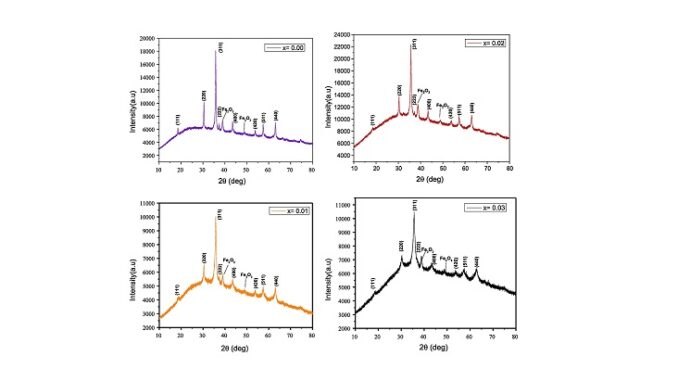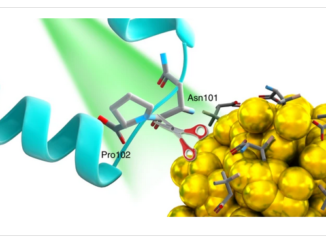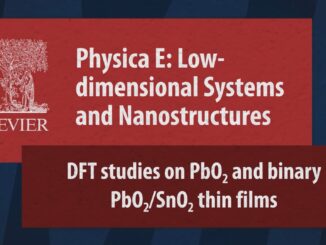
Effect of Eu3+ on the Structural, Magnetic and Mössbauer Spectroscopy Studies of Copper Ferrite
Abstract: Here, theoretical and practical methods were used to study the impact of Eu3+ substitution on copper ferrites. The spinel cubic structure of the synthesised samples is crystalline, and XRD analysis revealed the presence of a trace amount of the impurity Fe2O3 phase. The range of the estimated crystallite sizes is between 18 and 27 nm. FTIR spectra of the ferrites exhibited the presence of functional groups of spinel ferrites. The temperature-dependent Mössbauer spectra of CuFe2-xEuxO4 (x = 0, 0.01, 0.02, 0.03) (CEF) were collected at 300 K, 200 K, 100 K, and 14 K. Room temperature spectra consist of asymmetrically broadened sextets and quadruple split lines. The intensity of quadrupole split lines decreases along with the reduction in temperature. The observed changes in the structure of the Mössbauer spectra are typical of nanosized particles. The presence of paramagnetic lines at temperatures lower than the Curie temperature, asymmetric lines with sharp external fronts, and significantly diffused internal fronts is a sign of superparamagnetic relaxation. The partial substitution of Fe3+ ions by Eu3+ ions causes the redistribution of A and B cations, which leads to the alteration in angle and bond length of magnetic superexchange links. DFT calculations support the preference for octahedral Eu-doping in combination with the CuFe2O4 matrix, which results in local structural disorders that affect both the material’s magnetic and electrical characteristics. The size, shape, interaction with the matrix, and crystallite characteristics all affect the material’s magnetic properties. A weak ferromagnetic characteristic is indicated by the magnetic properties, and the magnetization values increase as Eu increases as a result of changes in crystallite size. As a result, our findings imply that synthesised samples are appropriate for applications involving hyperthermia.
Author(s): Angadi, V. J.; Yahia, I. S.; Zahran, H. Y.; Oliveira, M. C.; Longo, E.; Kubrin, S. P.; Manjunatha, S. O.; Ribeiro, R. A. P.; Ghozza, M. H.
Journal of Magnetism and Magnetic Materials
Published: 15 November 2022, Volume 562, 169789
DOI: https://doi.org/10.1016/j.jmmm.2022.169789
CDMF
The CDMF, hosted at the Federal University of São Carlos (UFSCar), is one of the Research, Innovation and Dissemination Centers (RIDC) supported by the São Paulo State Research Support Foundation (Fapesp), and also receives investment from the National Council Scientific and Technological Development (CNPq), from the National Institute of Science and Technology of Materials in Nanotechnology (INCTMN).




